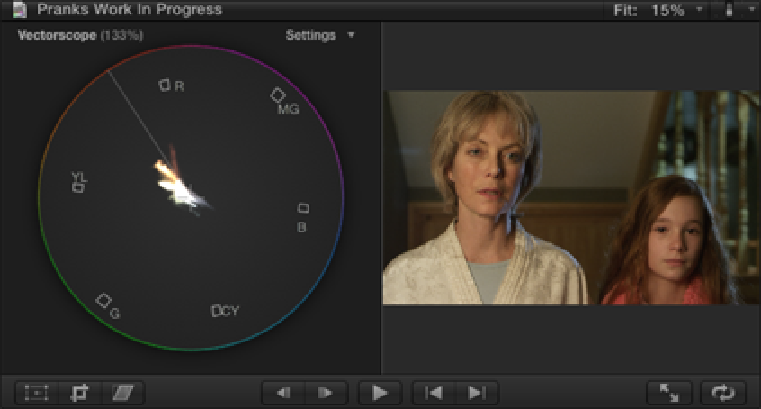Graphics Reference
In-Depth Information
Figure 15.4
Colors represented in the Vectorscope.
One of the key objectives in color correcting is to produce accurate skin tones for the actors, and a Vectorscope
can help with this. The diagonal line extending from the center out to the top-left corner of the Vectorscope is
the Skin Tone indicator line; people's skin tones are represented either on or around this line. Select Scene 17
Slate 31 Take 2 in the Event Browser to view it with the Vectorscope. In this two-shot of Joyce and Katie look-
ing at the camera, you can see their skin tones clearly represented around the skin tone line (see Figure 15.5).
For a better view, you can enlarge the scale of the display by choosing 133% Scale from the Settings drop-down
menu.
Figure 15.5
Examining skin tones with the Vectorscope.
The Histogram
The Histogram gives you a graphical display of the number of pixels of a certain luminance or color in an im-
age. It displays the value of luma or color on its horizontal axis, and the corresponding pixel count at each value
on the vertical axis. Select Scene 14 Slate 43 Take 1 in the Event Browser to view it with the Histogram, mak-
ing sure you have RGB Overlay selected from the Settings drop-down menu. This shot of Katie is predomin-


